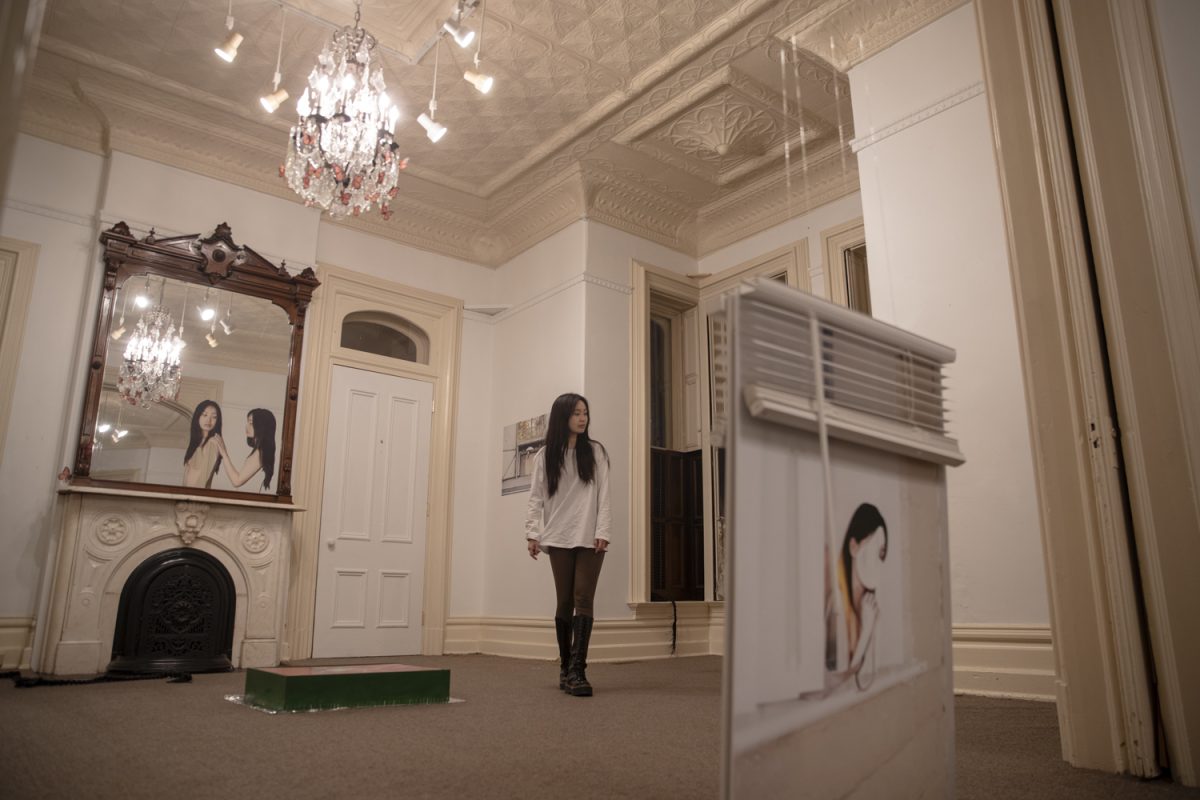By Austin Henderson
Today, Prairie Lights will feature author Ed Pavlic in the latest edition of its famed reading series, “Live from Prairie Lights.” In the 7 p.m. reading, he will read from his 2015 book, Who Can Afford to Improvise?, which looks at the writing and legacy of James Baldwin in connection with the black music of his era.The book is a piece of nonfiction for the poet and University of Georgia writing professor. Coming at a time of resurging interest in the work of Baldwin — Raoul Peck’s excellent documentary on Baldwin, I Am Not Your Negro, recently received an Oscar nomination — the book benefits from past biographical pieces and their close collaboration with the Baldwin family, which opened up access to a trove of personal letters that otherwise would have remained unseen.
This benefit has been immeasurable in Pavlic’s case. Speaking of the influence music had on Baldwin’s writing, Pavlic cited a letter from Baldwin to his sister, written while the writer lay poolside working on a screenplay of for an unreleased Malcolm X biographical film.
“Reading the letter, Baldwin kept citing lyrics for an Ella Fitzgerald album, talking about how he wanted to capture both their lyrical and rhythmic nature,” Pavlic said.
In tracing the musical influences of Baldwin, the book avoids chronological narrative, instead looking at the effect three artists — Billie Holiday, Dinah Washington, and Ray Charles — had on the writer. Pavlic emphasized the influence of music upon the author as a “shoring up” of the idea of black consciousness that influenced the trajectory of Baldwin’s writing career.
“Often in the public’s eye, Baldwin’s literary career is divided into two periods,” Pavlic said. “An excellent first few books, ultimately ruined by his foray into politics.”
Pavlic, however, suggests this change in the literary reception of Baldwin’s output had nothing to do with his work and everything to do with his challenging of societal norms.
“[For example], Baldwin’s career was much different than Ralph Ellison’s,” Pavlic said. “Whereas both achieved literary acclaim, Ellison maintained a certain style, and Baldwin chose to adopt many of the changes of the ’60s, choosing to create literature for regular people that didn’t necessarily read The New Yorker.”
As such, Pavlic argues that much of the criticism of Baldwin’s later works didn’t stem from the quality of the output but rather from his rejection of the need for critical acclaim itself and the “workshopped” literary identity that goes along with it.
“Stylistically, there was some change; the novels were certainly looser in structure but ultimately not responsible for the change in reception,” Pavlic said. “It was the challenging politics that caused that.”
The literary doors opened by Baldwin continue to show their influence today.
“I believe that much of the work today benefits both stylistically and materially from Baldwin,” Pavlic said. “Authors such as Toni Morrison can trace much of their style to his work.”
When asked what interested him, a poet, in the work of Baldwin, Pavlic answered simply.
“I think that in many ways, Baldwin was poet; his capture of lyrics and rhythm very much show this.”







